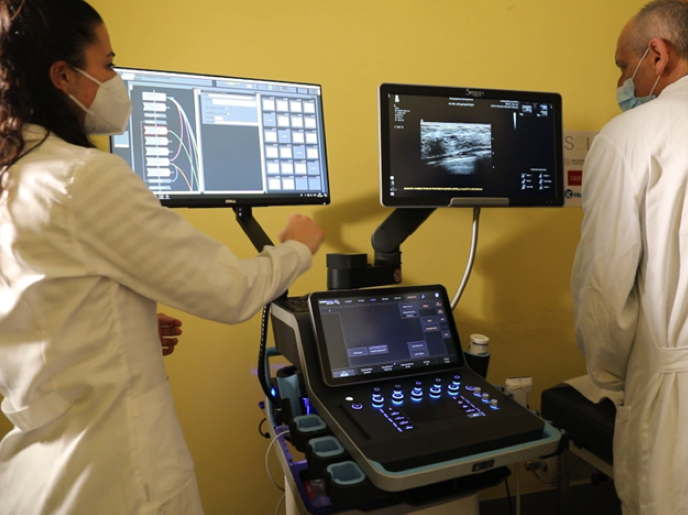A novel bioimaging detector for deep tissue imaging
Many biomedical applications rely on the detection of light. However, current light detectors suffer from low sensitivity and high background noise and offer practically no time resolution. Improved bioimaging technologies will not only improve diagnosis but also help understand fundamental biological processes.
A super-efficient light detector
The EU-funded SQP project developed a detector for single light particles, also known as photons. The device is based on a metal strip that is cooled down so that it becomes superconducting and has no resistance. Once a photon is absorbed, a small resistance appears that can be measured. The detection process is very efficient and very fast, surpassing in efficiency any existing single-photon detector. The SQP consortium undertook significant component optimisation and core technology development for bioimaging applications. “Our technology can be implemented in microscopy or other optical approaches and techniques to non-invasively image dynamic cellular processes in living tissue such as intracellular signalling,” explains Sander Dorenbos, project coordinator and CEO of Single Quantum(opens in new window). Examples include super-resolution microscopy(opens in new window), medical endoscopes for real-time diagnosis and biomedical imaging.
Implementation in microscopy, spectroscopy and biomarker detection
High-resolution optical microscopic imaging has led to the delineation of cell structures and processes. However, the heterogeneous nature of tissues limits microscopic resolution and creates background noise. In collaboration with Stanford University the SQP consortium implemented the new light detector in a microscope and performed several bioimaging experiments in the near-infrared-II (1 000-1 700 nm) window. Examination of the brain of a living mouse(opens in new window) using the single-photon detector led to deeper tissue penetration and reduced light scattering than existing light detectors. Optical spectroscopy(opens in new window) is another key field where the SQP detector can be applied. Non-invasive and safe, the measured absorption spectra can be related to physiological parameters such as blood content and oxygen saturation. The light is delivered to the tissue using fibre optics(opens in new window) and scattered/absorbed depending on the composition of the tissue. Haemoglobin, oxyhaemoglobin, water and fat are the main light absorbing components in living tissue and influence the measured reflection spectrum in a very specific way. In other words, optical spectroscopy can generate a fingerprint of the tissue and can therefore provide real-time information on surgical margins during, for example, tumour excision. The SQP detector can improve this field by minimising light scattering noise and improving tissue penetration. Another potential application of the SQP detectors is in the field of biomarker research and diagnosis. Predicting clinical outcomes often requires the measurement of specific biomarkers – indicators that correlate to certain biological states or conditions and can even provide an overview of pharmacologic responses to a therapeutic intervention. “The main achievement of the project was the industrialisation of a technology that was developed at a university,” emphasises Dorenbos. SQP is working to address the production capacity expansion required for bringing the detectors to the market to a wider range of users and applications. The use of SQP detectors will vastly improve diagnostics based on optical imaging and pave the way towards better care at lower cost.







